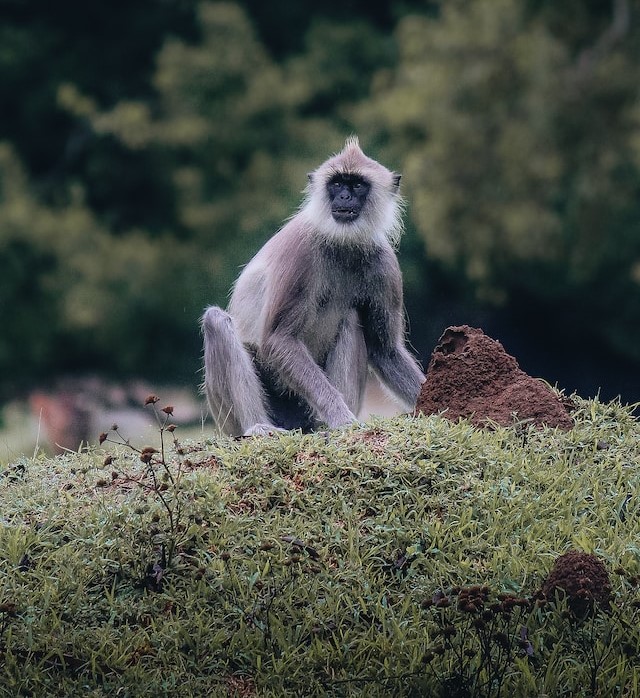Gray Langur [Semnopithecus Entellus]
Gray Langurs, also known as Hanuman langurs or the scientific name Semnopithecus entellus, are a type of old World monkey that can be found in South Asia and this is the majority of their population in India. This is very agile. These are known for their distinctive gray fur and long tails and take long jumps. These monkeys are part of the Colobinae subfamily and are often seen in various habitats, including forests, urban areas, and temples. They like to live more in trees and they mostly live in groups. There are many species of these.
Physical Appearance
Gray langurs have gray and white fur, but their faces appear black. Their tails are long that are often longer than their bodies, which they use for balance while navigating through trees. The body of gray langurs is 40 to 80 cm long and the tail is about 70 to 110 cm long. Their gestation period is 170 to 200 days. The female gives birth to only one baby at a time, which remains stuck to the mother’s stomach for some time.
Diet
These are herbivores and primarily feed on leaves, fruit, flowers, and other plant material. This is known to be quite adaptable in their food choices, which helps them survive in different environments.
Communication
Gray langurs use a variety of vocalizations to communicate with one another. They protect the animals living in the forest. When they feel threatened by other animals in the forest, they make alarm calls or territorial calls so that all the animals become alert.
Cultural and Religious Significance
In some parts of India, gray langurs are considered sacred and are associated with the Hindu god Hanuman. As a result, they are often protected around temples and are given food offerings.
Conservation Status
The conservation status of gray langurs varies depending on the specific species and their habitat. Some populations are declining due to habitat loss and hunting, while others are more stable. Conservation efforts are in place to protect these monkeys and their habitats.









